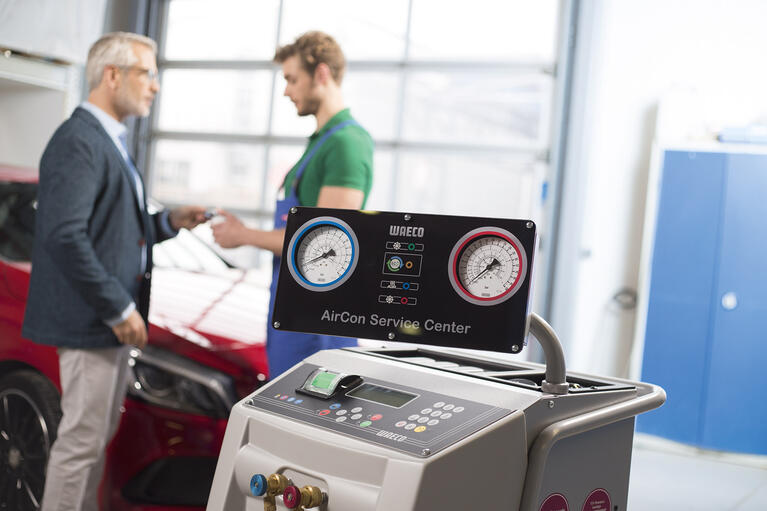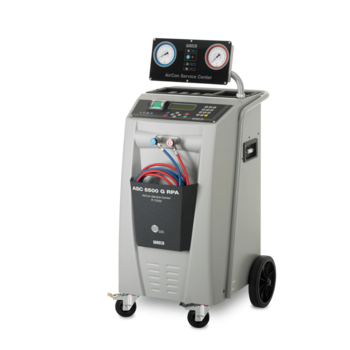
R1234yf Refrigerant
Everything you need to know about the alternative refrigerant
R1234yf: start now!
Newcomers to the motor garage: vehicles with R1234yf A/C systems increasingly come in for service, and not only after accidents. Younger models like Opel Mokka have grown older in the meantime, and wear starts to take its toll.
About the R1234yf Refrigerant
WAECO provides you with everything you need: purpose-built A/C service units, matching consumables and accessories – all perfectly adapted to R1234yf. There are two things you have to bear in mind when dealing with the “new” refrigerant. First, it is no easy 1:1 replacement for R134a or other refrigerants. Second, it is much more sensitive and must therefore be handled with ultimate caution and care.
Unlike R134a, which is increasingly scarce in supply, the new R1234yf refrigerant is readily available. But caution is advised here: It is absolutely imperative to avoid any mixing of different refrigerants, because it can lead to highly dangerous situations in the workshop or on the road. When doing service work on vehicle A/C systems, make sure you always use the refrigerant approved for the system you have and always play safe when dealing with R1234yf.
To our R 1234yf service stations
Which ASC service station for R1234yf suits your needs?
R1234yf Frequently Asked Questions
8 things you ought to consider when buying an R1234yf service unit
-
Fully automatic self testR1234yf must not escape into the atmosphere. Therefore, it is important that the service unit performs a leak check fully automatically prior to every system start.
-
Service couplers with ventilated clearanceR1234yf service couplers should have what is called a “ventilated clearance” to ensure that no refrigerant escapes even when you have a defective schrader valve.
-
Refrigerant analysisTo prevent dangerous cross contamination, refrigerant purity has to be checked with an analysis tool. Ideally, the tool is already integrated in the service unit.
-
Automatic disposal of non-condensable gases (ncgs)If the refrigerant is contaminated with non-condensable gases, the latter have to be removed automatically to ensure impeccable refrigerant quality.
-
Switch-on delay & External VentilationR1234yf is inflammable under certain conditions. To prevent the formation of an inflammable mixture, the service unit should be ventilated prior to every system start-up upon pressing the on button. Once this has been done, the electrical system can be enabled without any risk. It only makes sense to use an external fan, which takes in fresh air from the outside.
-
PAG oil and UV-additiveR1234yf A/C systems require special compressor oils and uv additives. Both need to be stored in humidity-free conditions. We recommend the patented container system from WAECO.
-
Clearly marked equipmentWorkshops will need two different A/C service units in the future, because R134a and R1234yf must not be mixed. To avoid confusion, the service units should be distinguishable at a glance.
-
Easy-to-maintain filterProper handling of R1234yf also means to replace the special filter regularly. An automatic change-filter indicator is advisable. Also, the filter should be easily accessible from the outside.

